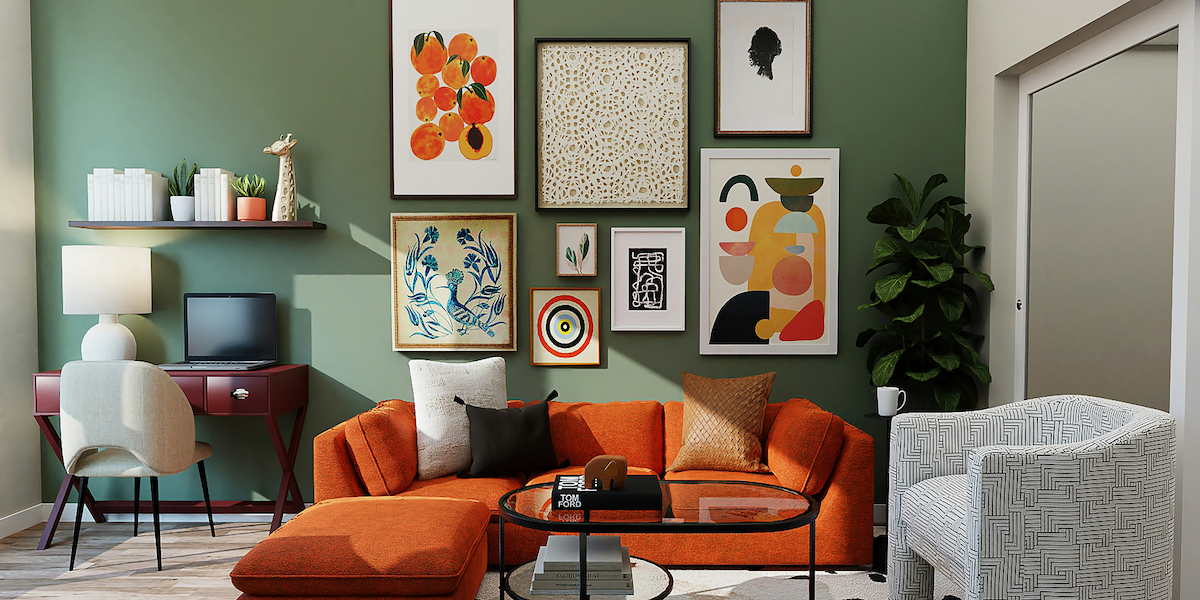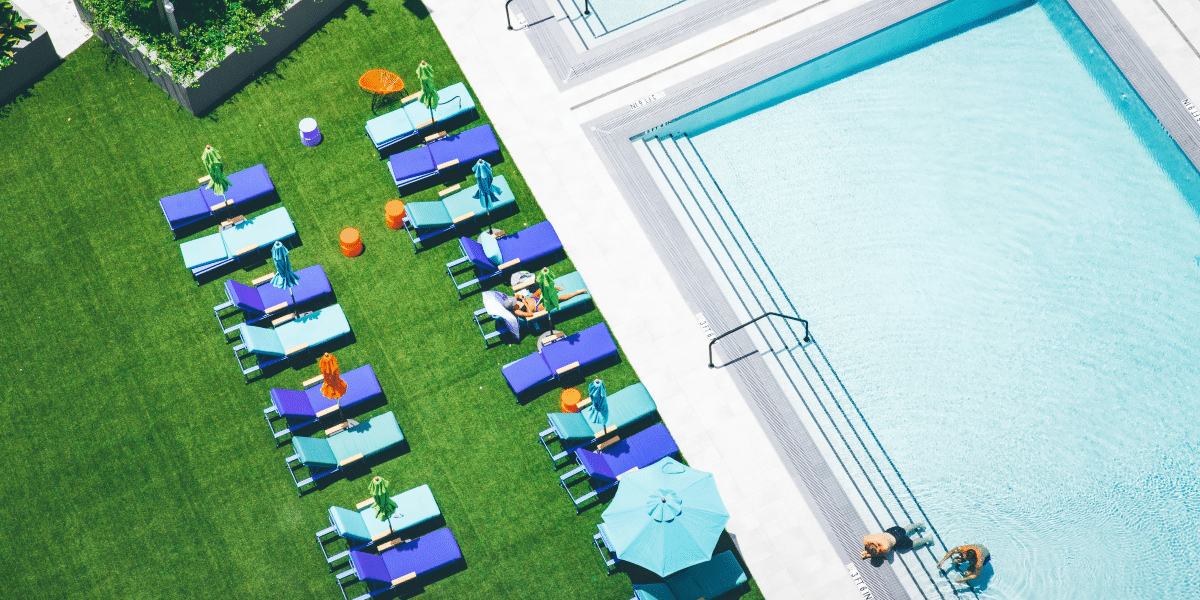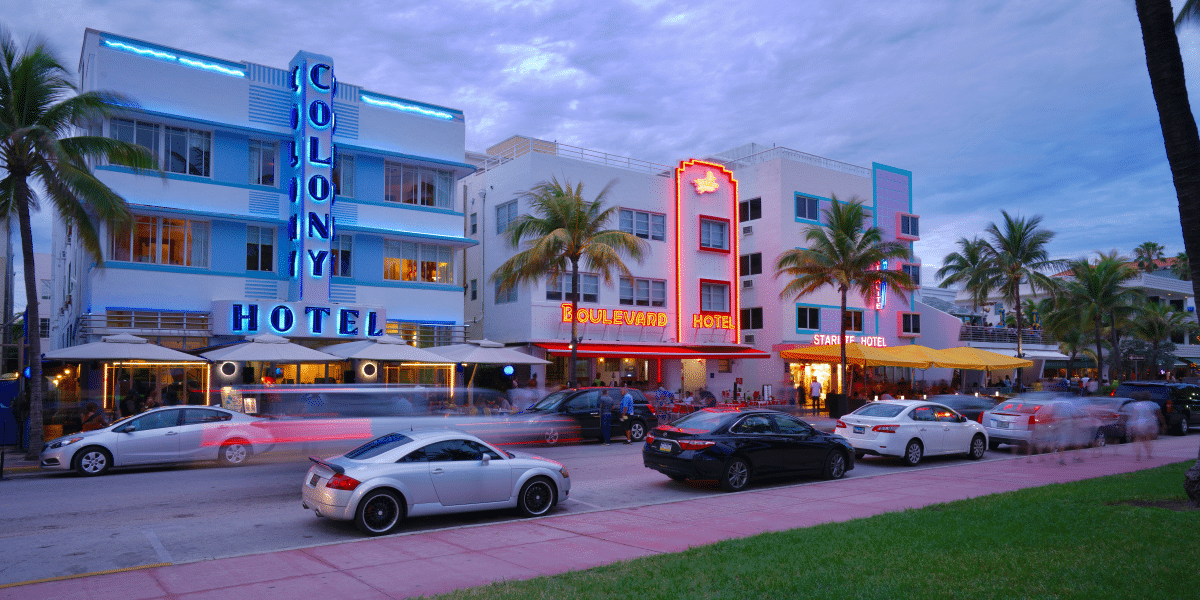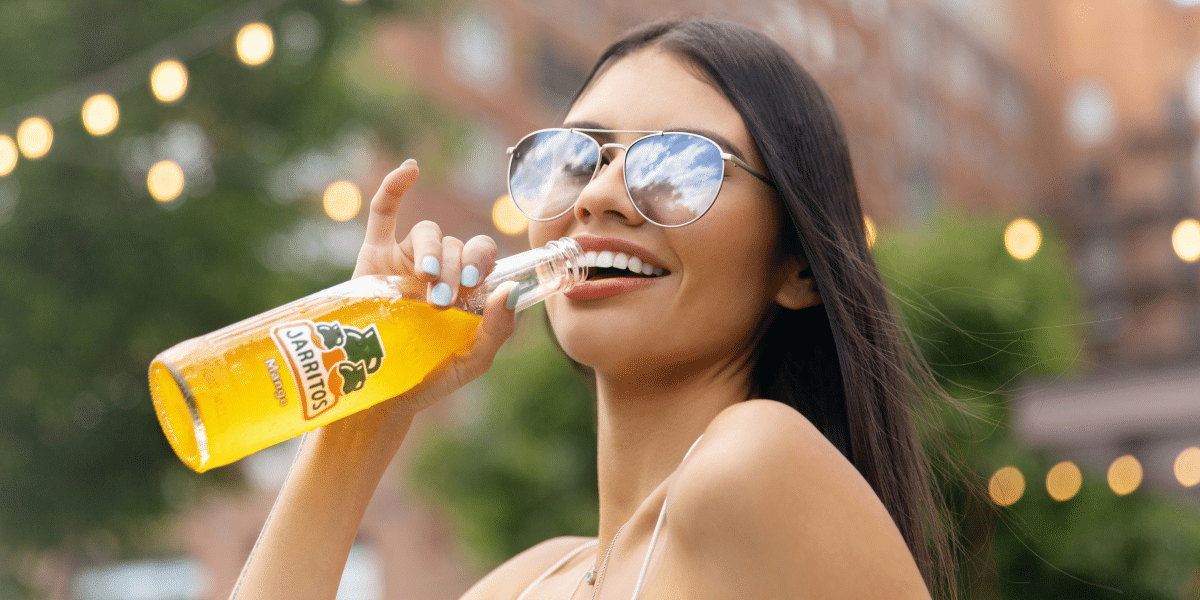Image commercially licensed from Unsplash
What has you seeing red? Or perhaps you’re feeling a bit blue? Green with envy? Colors are so closely tied to our emotions and feelings that our emotions and feelings are often described as color. There is an entire branch of psychology devoted to colors and how they affect our emotions and behavior.
This study is important when designing and deciding on color schemes for your space. Because of the interconnection of colors and emotions, interior designers must not only understand what colors evoke which emotions, but how to best use color in their designs. The saturation, tint, shade, and tone of color need to be taken into consideration. Color psychology, along with personal preference, will help you not only get the perfect aesthetic you desire, but it will also help to evoke the emotions and feeling you want your space to encapsulate.
Colors used to evoke emotions have been used for thousands of years. There is evidence of civilizations in ancient Egypt, China, and Greece using colors to aid in spiritual practices, as well as to treat a variety of health conditions, including mental health conditions.
Today we use color psychology to optimize our work, school, and living spaces. When you think about spaces- like a doctor’s office, think about what the intended feeling for that space is. A doctor wants their patients to be put at ease, so painting the waiting room a light green, which is a comforting color, is a common color for waiting rooms. The examination room is usually white. This is because you want that room to be immaculately clean, and the color white is associated with cleanliness. The color white also opens up a small space, making it seem bigger, and reducing any claustrophobia.
Color psychology is fascinating because it works across cultures. In a study of people from more than 30 countries, more than 68% of people reported feeling love when seeing the color red. Each color has emotions and feelings associated with it. Of course, emotions are extremely personal, and not all of these apply to every person, especially when you consider personal preference as well.
What Emotions Colors Evoke
Red- Red is a stimulating color. Bright reds can agitate and evoke strong emotions like anger. Red also has the power to make people feel love- hello, Valentine’s Day! Red also can increase your appetite. That fast food joint with the red in their logo? Not only is it eye-catching, but your appetite responds to it. Red is also associated with passion, energy, power, vigor, strength, and leadership. Red is best used with a neutral accent color, as too much red is overwhelming. A calming neutral color gets the emotion of red but balances it.
Orange- Orange is known as a color of joy. It can improve your mood and has been known to increase thyroid function. It is associated with light, warmth, happiness, pleasure, success, and healing. Much like red, orange can be overwhelming, so a neutral color can really enhance the color orange and control the strong emotion associated with it. The joy orange brings makes it an excellent color for kitchens and living rooms, as an accent color.
Yellow- Yellow is another color associated with joy. If someone has a sunny disposition, you think of that in a yellow light, and they are happy and joyous. Yellow can increase concentration; therefore, it is a great color to use in schools and offices. Yellow opens up a smaller space, so it’s great for small offices, hallways, kitchens, and bathrooms. Yellow uplifts the spirit and promotes optimism. Inversely, a yellow that is too dull is reminiscent of illness, agitation, and jealousy. So when you’ve decided on yellow as part of your color scheme, make sure it’s a vibrant yellow, not dull.
Green- Green is the color of nature and often makes people feel relaxed and at peace. Many spas use green because it’s such a calming color. The same is true for doctors waiting rooms. These are often painted a light green to help to calm the fears and anxieties of patients. Greens make us feel peace, trust, and comfort. The color olive green has internationally meant peace- perhaps we get the sense of extending an olive branch when we see that particular hue of green. Much like yellow, green evokes joy and healing, an excellent color for a living room or bedroom.
Blue- Blue is the only color that doesn’t generally have any negative feelings associated with it. For the majority of people, blue is the most calming color. It is proven to be the best color for studying, as it promotes intelligence. It makes us feel serene and soothed. As red increases the appetite, blue, which is on the opposite side of the color wheel from red, does the opposite. Blue suppresses the appetite. Notice most restaurants don’t use blue in their color scheme. If they do, it’s in a minimal way. Blue has also been shown to treat migraine pain. Blue can be used in any room of your home, even as a dominant color. Its soothing nature will make you feel at ease in any space.
Purple- Purple is the color of royalty and elegance. The different hues of purple, from a rich imperial purple to a bright lavender, can go from being dramatic to lighthearted. Purple inspires creativity and excitement. Purple accents are great for offices, bedrooms, and kitchens.
Brown- Brown is a color best used sparingly for interior design. When used as the primary color, the feeling of the space is heavy and dark and can be depressing. The most effective browns are used as an accent color and used with a bright color. When brown isn’t overwhelming, it can create a sense of calm and can relax the senses. It can make one feel safe, secure, and comforted.
Pink- Pink gives the feeling of comfort, love, and sweetness. It is traditionally a feminine color but can be used in masculine ways, especially when used as an accent color. Pink makes us think of nurturing and warmth. Pink is a great color for a bedroom, and as an accent color in a living room. The nurturing feeling pink evokes can help you feel calm, relaxed, and cared for.
White- Cleanliness and refreshment are associated with white. This color has the ability to open up a small space and make it feel larger. White can be a calming color and good for those with hypertension and anxiety. Ceilings are most often white to open up a space and not make it feel closed in. It also evokes a sense of tranquility and peace.
Black- When used sparingly, black represents elegance and sophistication. It is an excellent color to use as a contrast. Too much black can be gloomy and overwhelming. Black is extremely versatile and can be used in a variety of ways. From throw blankets or pillows to a rug, black can make your design stand out and be as bold as the color itself.
Saturation, Tint, Shade, and Tone
Saturation, tint, shade, and tone of any color need to be taken into account when coming up with a color scheme. These elements of color can affect the feeling, mood, or behavior of each color associated with it. Saturation is how rich color is. A deeply saturated color will look bold and will stand out more. The tint is how much white is added to a color. For example, pure red can be toned down and not as aggressive when white is added to the color. Shade is when a color is darkened by black being added to it. For example, a green when black is added makes it more of an olive, or dark green. The tone of a color is how much gray is added to the color. Tone decreases the vibrancy of color, and creates a softer hue by adding gray. Your look will not be as bold when a gray is added. This isn’t a bad thing, as not every color used needs to be bright and bold, especially if you are going for a more relaxing and cozy feeling in your space.
Interior design and color psychology are closely related fields. A great interior design takes color psychology and personal preference into account when designing a space. Also, the purpose and function of the room should affect the color scheme. The perfect aesthetic isn’t all about how a space looks. It’s about how the space makes you feel. The colors you choose for your living and working spaces should reflect the desired emotions and feeling you want to be associated with that space.
The expert designers at Niche Design House know how to weave color psychology together with your personal style and preference to get you the look and feeling you want for your space. Come to our showroom today to get inspired by colors, and color schemes. We can’t wait to start a design for you. Your unique space will embody our motto: Defined by you, designed by us.









